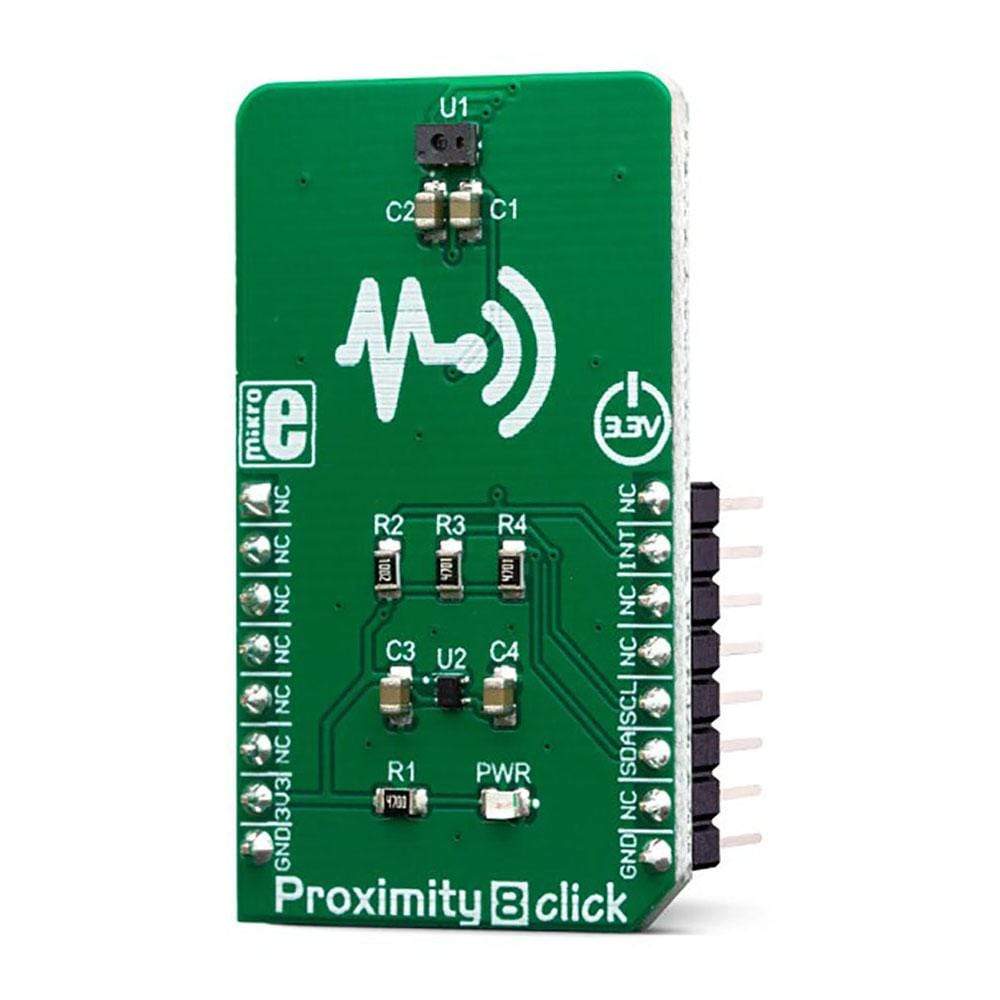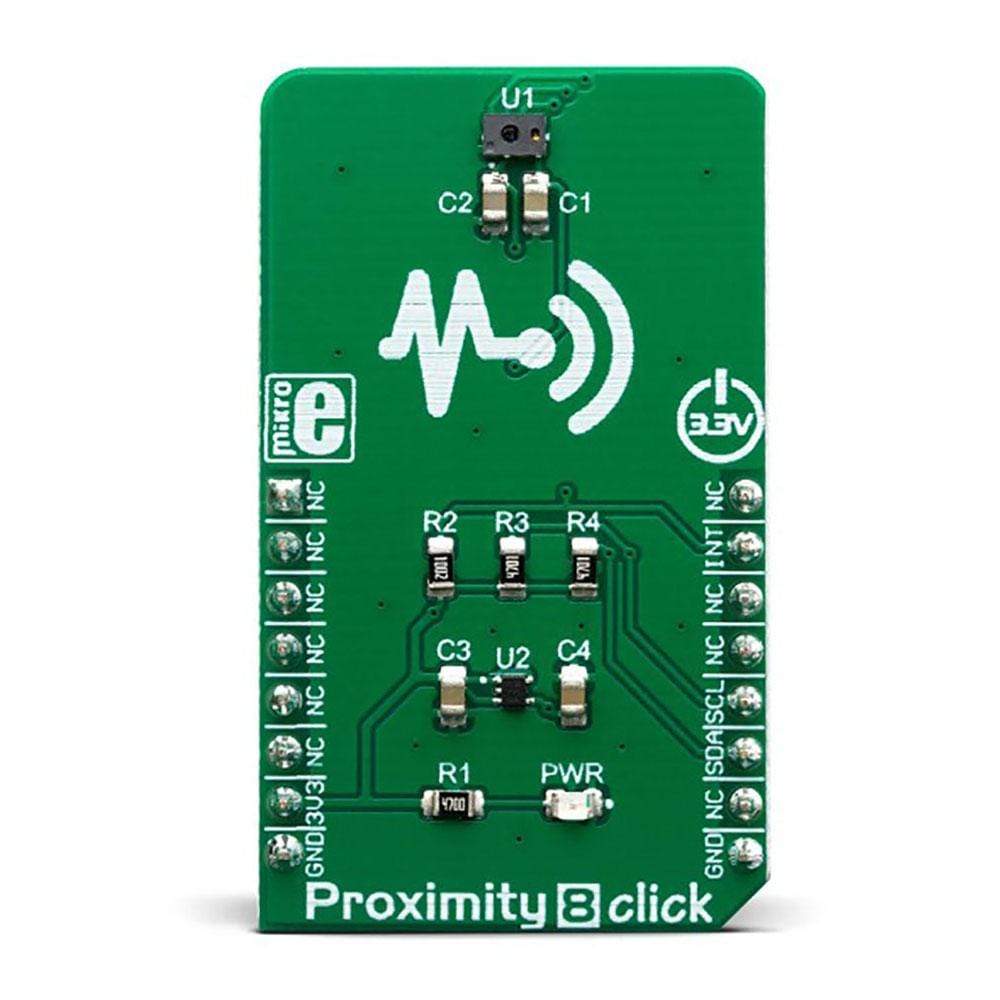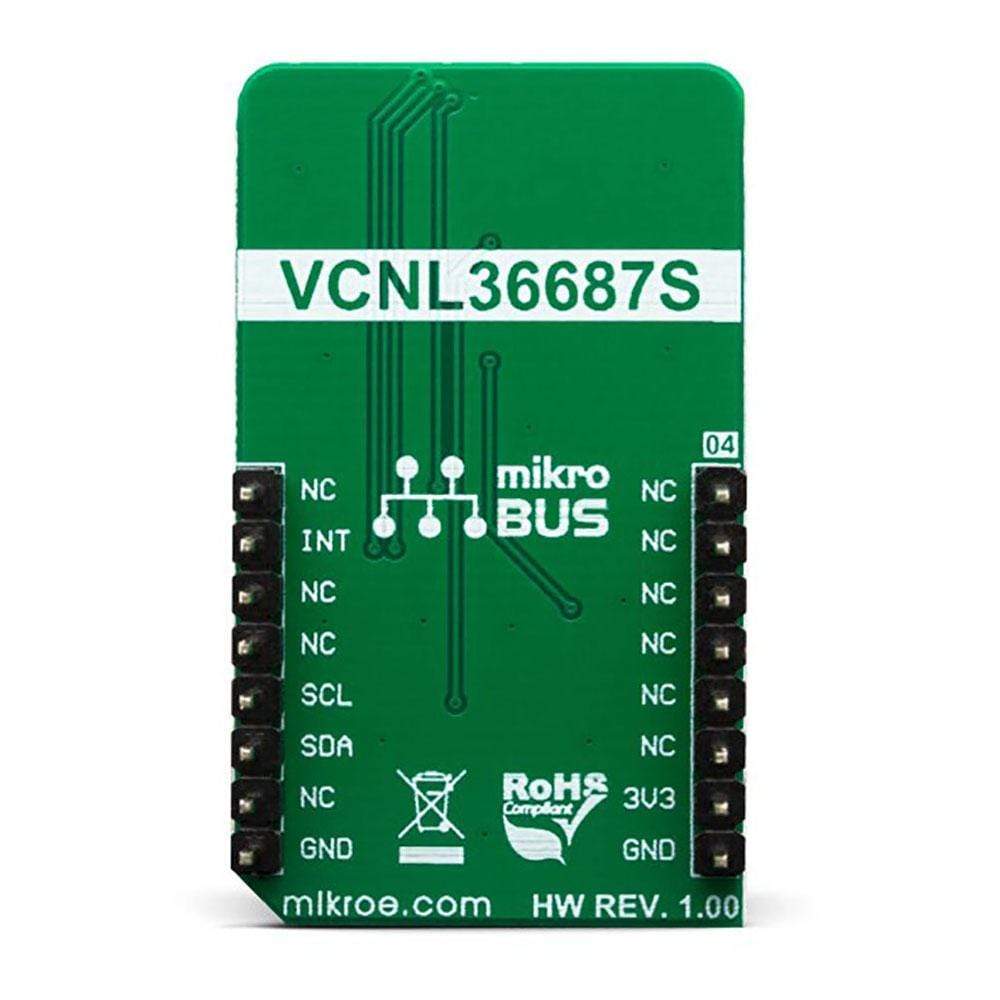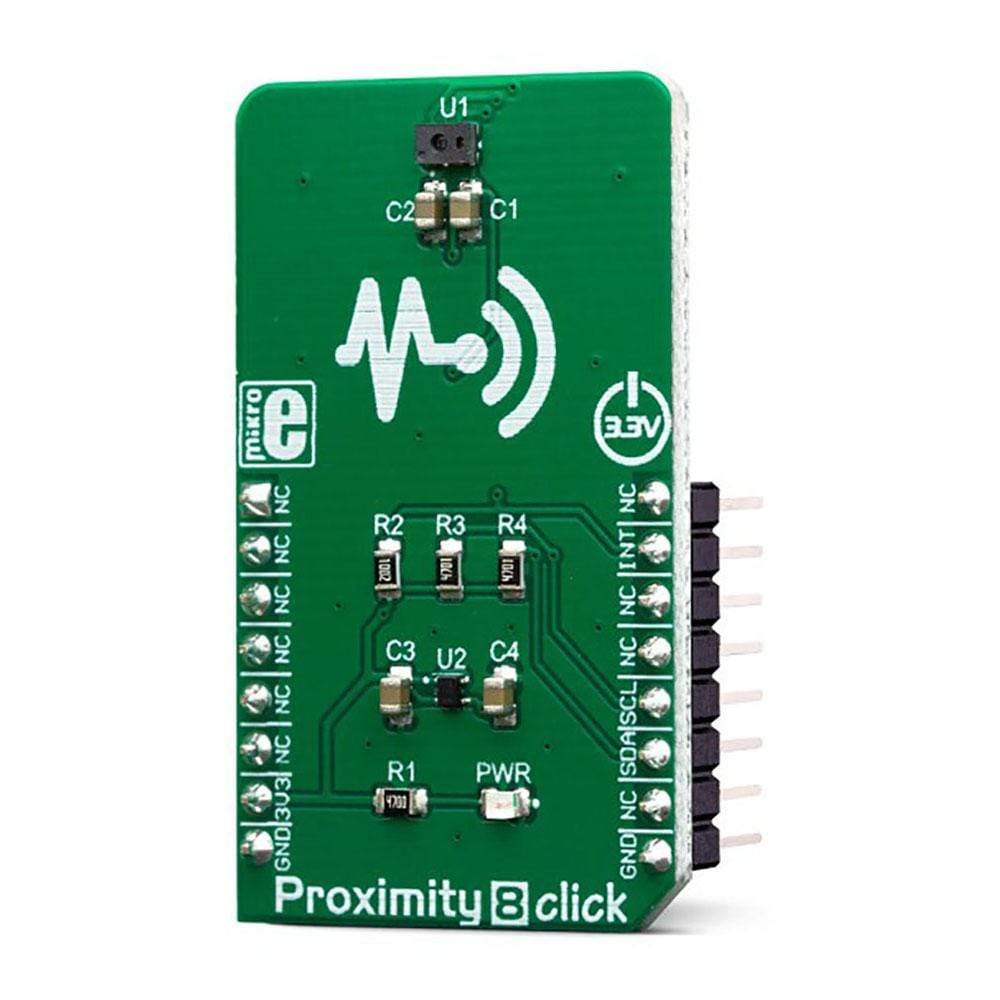
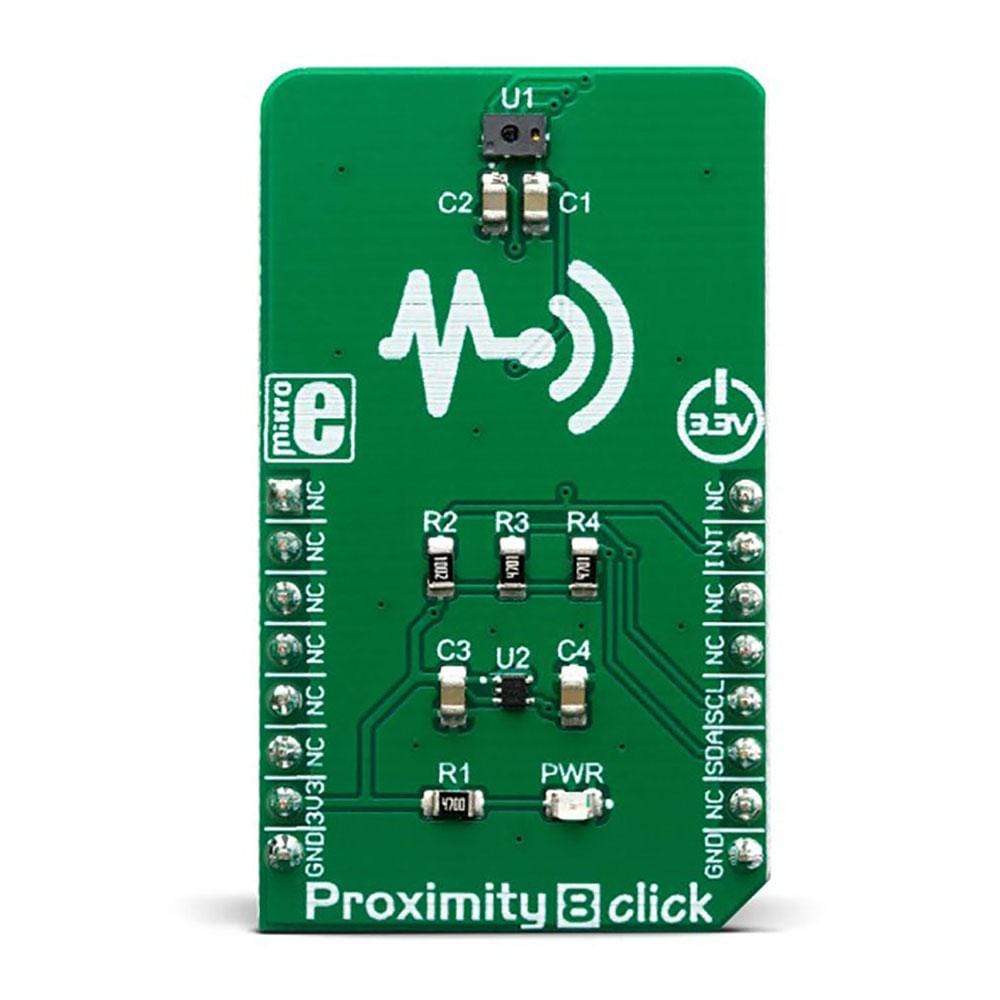
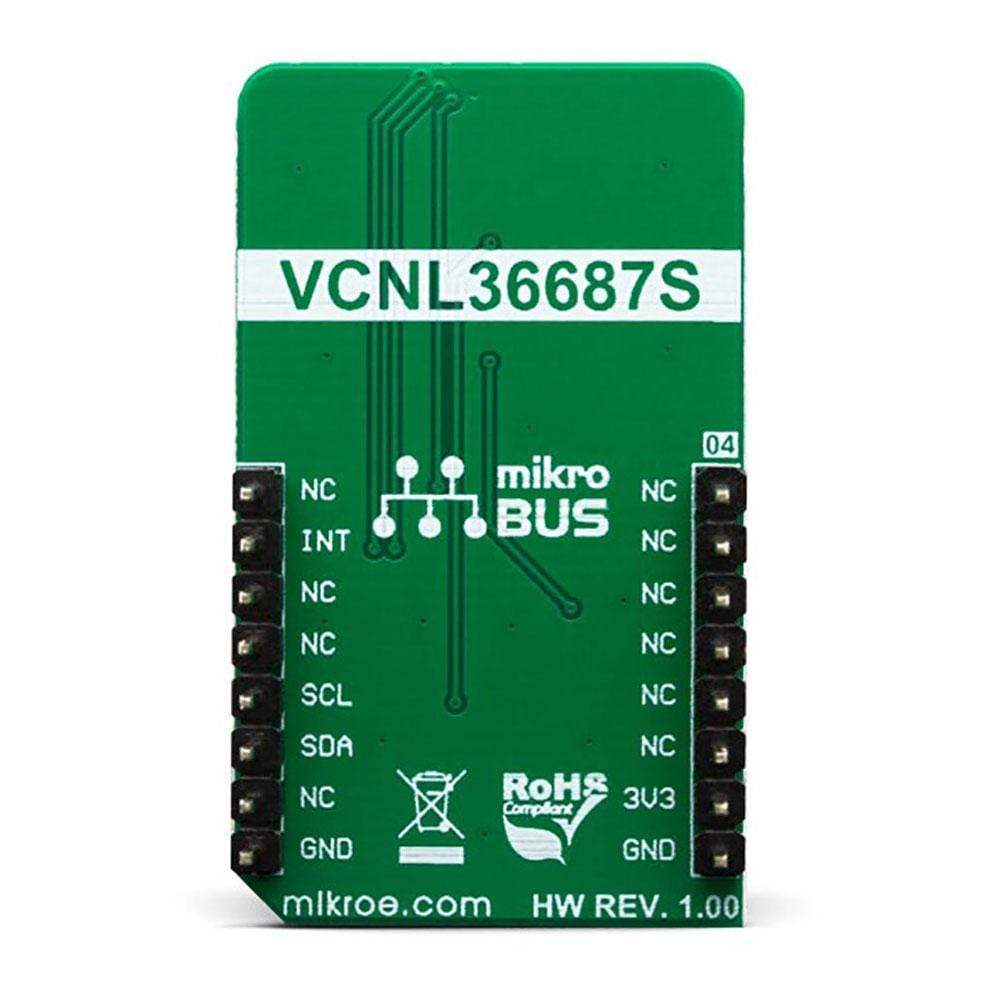
Overview
The Proximity 8 Click Board™ is a close-range proximity sensing Click Board™, equipped with the VCNL36687S, a very accurate and power-efficient proximity sensor (PS) with VCSEL. A Vertical-Cavity Surface-Emitting Laser (VCSEL) is used in conjunction with the advanced analog and digital front-end circuits, which allow minimal power consumption and simplified operation. The sensor can be triggered by a single command over the I2C interface. An advanced interrupt engine allows reliable MCU interrupt triggering, featuring the programmable persistence which helps to avoid false reporting.
Downloads
Das Proximity 8 Click Board™ ist ein Click Board™ mit Näherungssensor für den Nahbereich, ausgestattet mit dem VCNL36687S, einem sehr genauen und energieeffizienten Näherungssensor (PS) mit VCSEL. Ein Vertical-Cavity Surface-Emitting Laser (VCSEL) wird in Verbindung mit den fortschrittlichen analogen und digitalen Frontend-Schaltkreisen verwendet, die einen minimalen Stromverbrauch und eine vereinfachte Bedienung ermöglichen. Der Sensor kann durch einen einzigen Befehl über die I2C-Schnittstelle ausgelöst werden. Eine fortschrittliche Interrupt-Engine ermöglicht eine zuverlässige MCU-Interrupt-Auslösung und verfügt über die programmierbare Persistenz, die hilft, falsche Meldungen zu vermeiden.
| General Information | |
|---|---|
Part Number (SKU) |
MIKROE-3439
|
Manufacturer |
|
| Physical and Mechanical | |
Weight |
0.018 kg
|
| Other | |
Country of Origin |
|
HS Code Customs Tariff code
|
|
EAN |
8606018714865
|
Warranty |
|
Frequently Asked Questions
Have a Question?
Be the first to ask a question about this.

